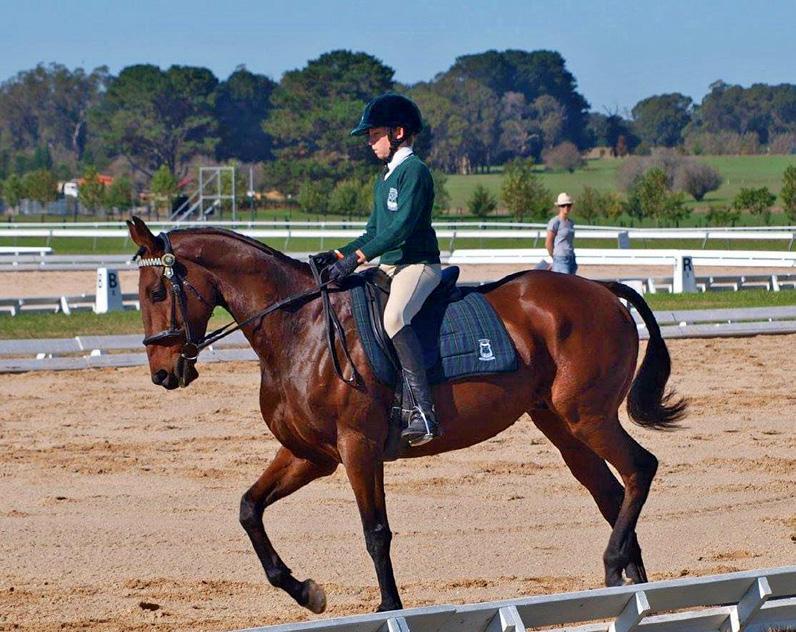
8 minute read
Training Tips: It's all in the approach
AROUND THE TRAPS
Riley Hubbard and PPP Spring Lark compete at the Oxley Interschools in the NSW Southern Highlands (Image by David Hubbard).
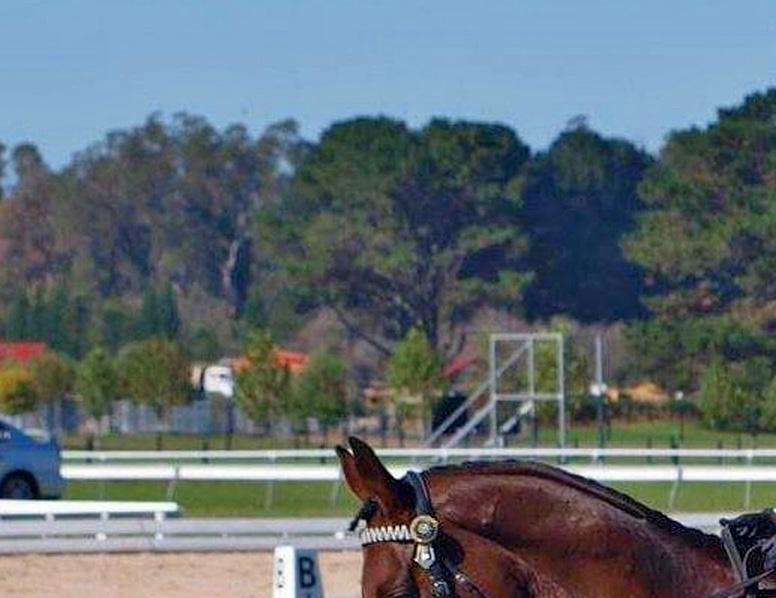
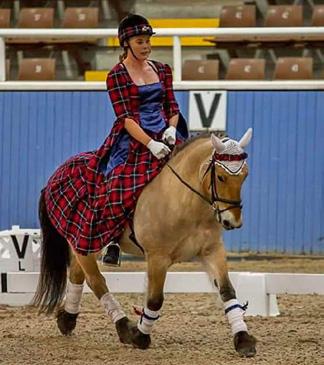
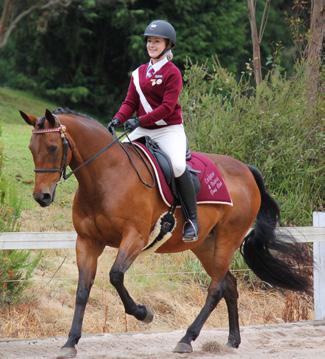
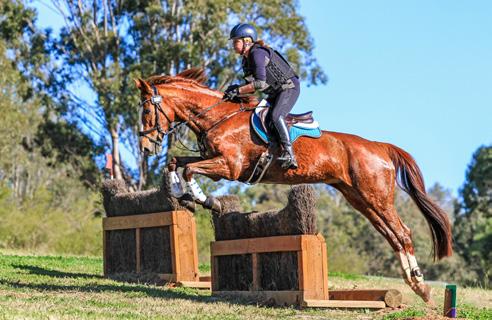
LEFT: Georgie Lorson and Halcyon Days at the Sydney International Equestrian Centre in July 2020 (Image by Melissa Goodson, Snapshot Australia). BELOW LEFT: Kelly Needham strapper and part owner of four-year-old Thoroughbred racehorse Sometimes Never (Image by Brett Bennett). BELOW: Emily Brown and Tess competing in the 90cm event at the Ashwood Equestrian Centre (Image by May Whiston Photography).
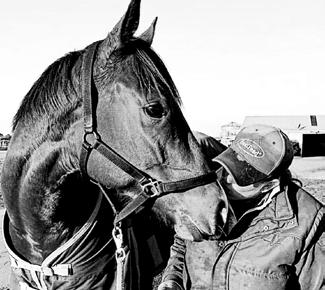
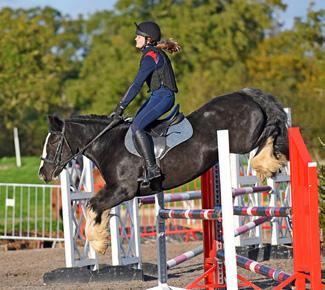
FAR LEFT: Annabel Crutchlow and Rosemarkie Winsome at the Pony Club State Dressage Championships in Western Australia (Image by Fox Folly Photography). LEFT: Jess Alderson and her Australian Stock Horse No Turning Back, members of the Cockatoo and District Pony Club (Image by Lisa Alderson). RIGHT: Grace Norley and Sydney, her OTT Thoroughbred, ride tackless for the first time (image by Cecilia Norley).
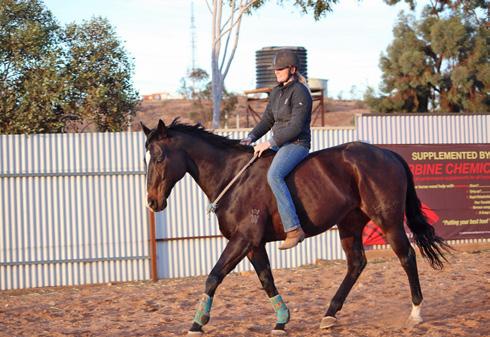
TRAINING TIPS
It’s all in the approach
An accredited Equestrian Australia coach, AMANDA CLIFFORD offers some valuable insights into how to reach a greater understanding of your horse, developing a more perceptive approach to training in the process.
Based on Queensland’s Sunshine Coast, Amanda Clifford has been riding horses since she was a child. It’s a long-held passion that has taken many forms, including: assisting with the management of a performance horse rehabilitation facility; horse training and breaking; PCQ Club President and Equestrian Queensland Club Vice President, and at times, Welfare Officer for both; a fulltime coach, and the list goes on. On top of this, she’s a long time student of all things equestrian, and Amanda being Amanda, her list of interests is considerable, from the principles of equitation science including equine learning theory, and the biomechanics of horse and rider, to the principles of classical dressage, equine restorative and soundness techniques, and the philosophies that underpin excellence in coaching.
Neither is she averse to thinking outside the box, and this is where her approach to training becomes interesting. “My path to coaching hasn’t come from the more usual route of success in competitions - it’s more about a lifelong interest in education. In fact, I suffered from fairly severe performance anxiety as a young adult in the competition arena, and I had quite a sensitive mare who didn’t cope very well either. But I loved working at home and taking lessons, and that started me on a very different path - and I love it!
And Amanda is not of a mind that competitions are for everyone: “I think the more horse-centred you become, the more competition takes a back seat because it’s not always in the best interests of your horse to go out and compete. It’s good to push yourself out of your comfort zones at times, but training should always be horse focussed, with competitions fitting in where they fit in, if at all – and that’s perfectly OK,” she says.
When it comes to training tips, there are three that are near and dear to her heart:
Study the horse
Studying the horse doesn’t mean studying only your own horse, although thoroughly knowing your equine partner is important. Amanda is referring to learning about horses in general. “You should make a point of gaining information about what an equine actually is - because to ride one but not to know that is denying the horse the right to its virtues. Study the evidence based science and gain a deeper understanding of the species, because they have some quite specific behaviours around how they adapt, learn and keep themselves safe – and they simply don’t work outside of their nature.”
As Amanda points out, if you don’t know that a horse is a prey animal, you might make the mistake of thinking that certain behaviours are intentional rather than a reflection of their natural instincts. “For example, horses don’t see as we see, and the way they visually assess things is different. So if a horse swings around to look straight on at something and either lowers or raises its head to gain a better view, your response shouldn’t be to immediately correct that behaviour, thinking that your horse is somehow misbehaving. If instead you understand that that’s how a prey animal with that type of vision needs to position itself in order to be sure that there’s no danger and it’s not about to be harmed, you’re not likely not to respond with a punishment.”
By extending that level of understanding to your horse, you de-escalate the situation and bring them back from the flight or fight threshold they may have been approaching. And as Amanda explains, that doesn’t mean that all your training has been wasted: “It just means that you are taking 15 seconds or so to allow your horse to satisfy itself that there’s no danger. If instead you force the horse to continue, with every circle past the object that’s bothering them they may become increasingly anxious, making you increasingly frustrated.”
So tip number one, never forget that your horse does not possess human traits. “They’re an equine with the qualities of a prey animal,” she says, “and if you work against those qualities you’ll have unnecessary battles because you’re misinterpreting what they’re doing and why. If instead you acknowledge their unique traits, you can still do what you want to do with your training, and actually get there faster.”
Avoid sending mixed messages
Cruiser the Buckskin Morgan is obviously relaxed in Amanda’s company (Image courtesy Amanda Clifford).
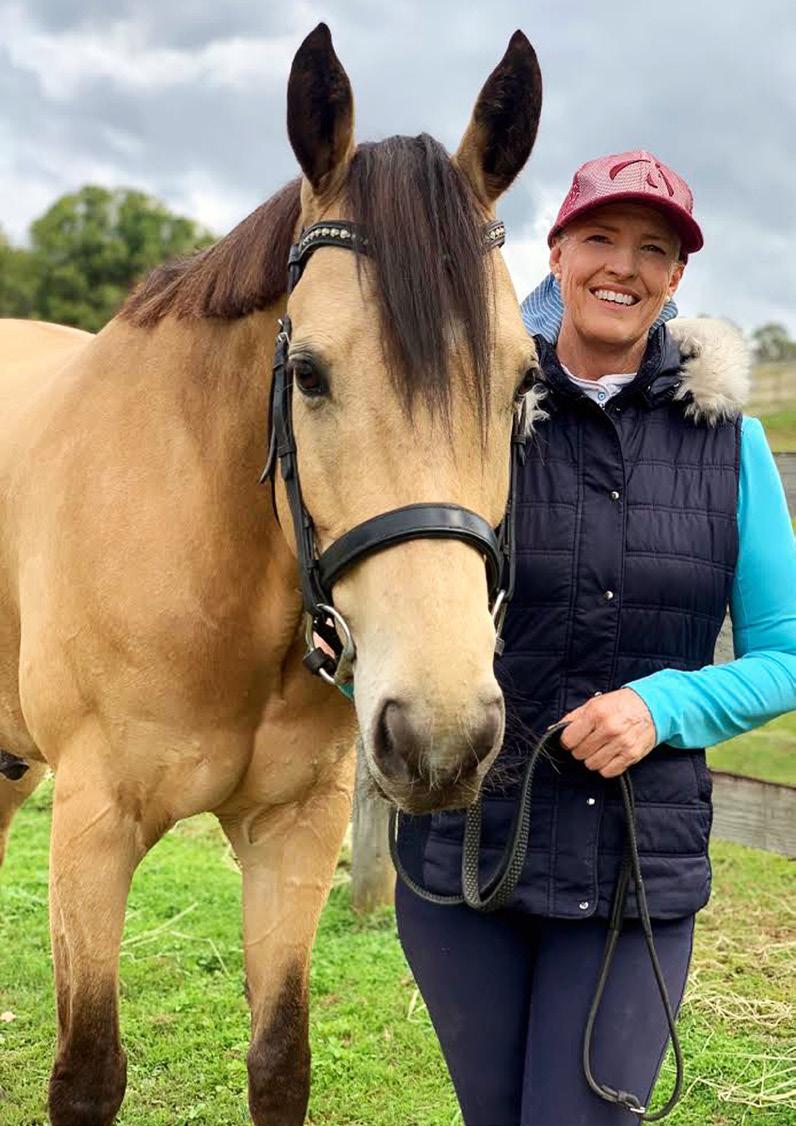
You’re never too young to learn good foundations: Amanda coaching Chole Walker and her pony over poles (Image by Justine Townsend).
and even punishing a horse for a response that they actually asked for. “If you’re giving the horse mixed signals - for example, if the rider says ‘go’, but their body position says ‘no’ – or, if you think you’re telling the horse to do something and you’re actually not, that’s going to set up a situation where the horse is unable to relax because he doesn’t have the clarity he relies on to know what’s going on. You need to be very careful to avoid the clashing of aids, or unintentionally cueing the horse to do something that it wasn’t your intention to ask for.”
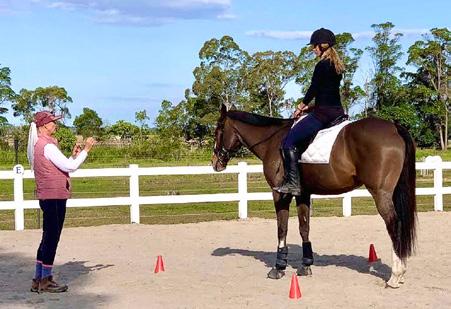
Amanda explains that if the horse does not know how to interpret what you want, they won’t be relaxed in your presence, and that applies whether you’re on the ground or in the saddle. “It’s on the ground that a horse first begins to get an understanding of you, whether they need to guard themselves or whether they can relax. And the same applies when they’re under saddle – and for me a relaxed horse is right where you want them to be, and that’s in a zone where they can engage their mind and body and thus learn.”
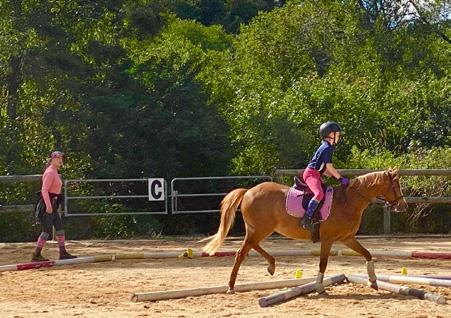
Do. Not. Punish.
And for Amanda’s top tip? “Don’t punish, literally, just don’t punish. You can redirect, you can bring back on task, you can make small suggestions for corrections. You can show a horse you wanted a different response without surprising, frightening or hurting them. Reacting by taking after your horse with rein yanks, repeated small circles, or whipping more than tapping, are all unhelpful punishments because the horse can’t reason why they’re happening”.
For example, you might be asking your horse for a longer stride in a walk and instead they break into a trot. “Because the horse has not made the choice you wanted, you could violently yank on the reins, or turn a tight circle – but these aids are not the aids for a lengthened walk, so this reaction would be considered a punishment. In contrast, you could swiftly use a half halt and transition within a stride or two back to walk before setting the horse up to calmly try again, and this time they’ll have a clearer idea that trotting was not the answer,” she explains.
Amanda stresses that the window in which you can let the horse know they’ve misinterpreted what you asked for is literally within two or so strides. In order for your horse to achieve what you’re asking for with fewer tries, it’s also important to work on improving how and when you apply your aids.
The trick, she says, is to encourage a learning environment in which your horse is not afraid to try something different if they initially got it wrong. “When you come in with heavy or harsh aids, your intent is to scare the horse into doing something else. Punishment evokes fear which diminishes the amount of positive associations they’ll take away from the training. Aim to keep them relaxed and in the learning zone, where they’re more likely to understand that if their first response wasn’t the right one, they can try again.”
And that’s important because as Amanda points out, horses learn through
Amanda and Justine Davis on borrowed Irish Sport Horse Otti (Image courtesy Amanda Clifford).










